34 Unforgettable American Sweet Pies You Need to Taste
Sweet pies have tantalized taste buds across generations, weaving delightful memories into our culinary landscape.
These delectable desserts represent more than just sugary treats - they symbolize comfort, tradition, and shared moments.
Families gather around tables, eagerly anticipating the first slice of a perfectly baked pie.
Regional ingredients and cultural influences shape these beloved pastries, creating unique flavor profiles that reflect local traditions.
Home bakers and professional pastry chefs alike take pride in crafting these intricate desserts with skill and passion.
Flour-dusted counters tell stories of love, creativity, and generations of baking wisdom passed down through time.
The magic of these sweet creations lies in their ability to transform simple ingredients into extraordinary experiences.
You'll love diving into these 34 favorite American sweet pies that showcase incredible culinary creativity:
Favorite American Sweet Pies for Any Occasion
Generations of bakers have crafted sweet pies for every season and celebration. Buttery crusts and luscious fillings keep this tradition going strong.
Key Lime Pie
Key lime pie stands as a zesty Florida Keys dessert blending tangy citrus with creamy sweetness.
Graham cracker crusts cradle a silky custard made from Key lime juice, condensed milk, and eggs.
Bright green hues hint at the pie's signature citrus punch, delivering sharp acidic notes against sweet cream toppings.
Florida settlers popularized this dessert after botanist Henry Perrine introduced Key limes from Malaysia in the 1830s.
West Indian limes provide intense aromatic flavors that create complex taste profiles.
Whipped cream adds a soft, luxurious finish to each slice.
Bakers carefully balance lime's sharp bite with condensed milk's sugary smoothness.
Generations of Florida cooks have perfected this iconic dessert that captures tropical sunshine in every bite.
Peanut Butter Pie
Peanut butter pie embodies Southern comfort with its irresistible blend of sweet and salty flavors, featuring a rich peanut butter filling nestled in a crumbly crust.
Originating in Georgia, this decadent dessert combines roasted and salted peanuts with a creamy mixture of brown sugar, flour, butter, eggs, milk, vanilla extract, and corn syrup.
Bakers craft the crust from simple ingredients like flour, sugar, salt, butter, and water, sometimes incorporating chopped peanuts for extra crunch.
Generous amounts of smooth peanut butter create a luscious filling that tantalizes taste buds with its intense nutty profile.
Roasted peanuts scattered throughout add textural contrast and enhance the pie's robust flavor.
Home bakers often serve this pie chilled, topped with a cloud of whipped cream for added indulgence.
Nutritionists appreciate the protein-rich ingredients that make this dessert more than just a sweet treat.
Marionberry Pie
Marionberry pie embodies Oregon's signature dessert, showcasing a unique blackberry hybrid born from Chehalem and Olallie berry crossbreeding.
These deep purple berries deliver an extraordinary balance of tartness and subtle sweetness with complex earthy undertones.
Bakers craft the pie using a traditional buttery crust made from flour, salt, shortening, and cold water.
Marionberries combine with sugar, cornstarch, and a touch of cinnamon to create a rich, vibrant filling.
Skilled bakers carefully layer the mixture into a perfectly prepared pastry shell.
Gentle baking transforms the ingredients into a golden-brown masterpiece with bubbling juices.
Served warm or at room temperature, the pie offers a quintessential taste of Pacific Northwest agriculture.
Each slice represents generations of Oregon farming tradition and culinary creativity.
Lemon Meringue Pie (Lemon Meringue Pie)
Lemon meringue pie stands as an iconic American dessert featuring a perfect balance of tangy lemon custard and cloud-like meringue atop a buttery shortcrust pastry base.
Historians debate its precise origins, with some crediting Elizabeth Coane Goodfellow from Philadelphia or Swiss baker Alexander Frehse for early versions.
Egg yolks, sugar, and fresh lemon zest create the signature custard filling that gives the pie its vibrant citrus flavor.
Presidential records confirm the dessert's long-standing popularity across generations.
Meringue tops the creamy lemon layer with a pillowy, golden-brown surface that adds textural contrast.
National Lemon Meringue Pie Day on August 15 celebrates this beloved sweet treat.
Bakeries and home cooks continue to cherish this classic dessert.
Each slice promises a harmonious blend of tart, sweet, and creamy elements that delight dessert fans.
Blueberry Cobbler
Blueberry cobbler stands as a rustic American dessert celebrating sweet-tart blueberries nestled beneath a golden, buttery biscuit crust.
European settlers and Native Americans contributed to its delicious heritage, with indigenous tribes introducing blueberries to early colonists.
Pioneers adapted the recipe during 19th-century travels, transforming complex European pastries into simpler one-pan dishes.
Summer harvest peaks make this dessert especially popular during independence day celebrations.
Fresh or frozen blueberries create a juicy base that bubbles beneath a crisp, crumbly topping.
Warm servings often include a scoop of creamy vanilla ice cream or dollop of whipped cream.
Huckleberry Pie
Huckleberry pie revolutionizes traditional desserts with its tangy-sweet profile and rustic charm, originating in the northwestern United States where wild huckleberries grow abundantly.
Native Americans first discovered these small, intensely flavored berries in mountain regions of Idaho, Montana, and Washington.
Regional bakers transform the wild berries into a classic double-crust pie featuring a vibrant filling made with sugar, lemon zest, and subtle spices like cinnamon and nutmeg.
Cornstarch or flour helps thicken the berry mixture, ensuring a perfect consistency when baked.
Summer harvests provide the freshest ingredients for this regional specialty.
Generations of families have passed down recipes celebrating the unique tartness of huckleberries.
Bakeries and home kitchens across the Pacific Northwest continue this beloved pie tradition.
Summer gatherings often feature this iconic dessert as a centerpiece of community celebrations.
Lemon Ice Box Pie
Lemon ice box pie delivers a tangy, creamy dessert capturing classic North American summer simplicity with minimal baking.
Southern kitchens perfected this refrigerated treat using condensed milk, fresh lemon juice, and egg yolks that naturally set when chilled.
Vanilla cookie or graham cracker crusts provide a crisp foundation for the smooth, zesty filling.
Historic ice boxes originally inspired the pie's chilled preparation method during sweltering months.
Clancy's restaurant in New Orleans popularized the modern version of this refreshing dessert.
Refrigeration techniques transformed the traditional recipe into a quick, easy summer staple.
Simple ingredients create a rich, cool dessert that balances sweet and tart flavors.
Minimal preparation makes this pie a go-to comfort food for many home bakers.
Apple Pie
Apple pie dominates American dessert culture as a quintessential comfort food rooted in traditional baking techniques from England.
Generations of home bakers have perfected this iconic dessert with golden-brown double crusts and sweet cinnamon-spiced apple fillings.
Granny Smith apples spark passionate debates among baking enthusiasts due to their challenging tartness and potential to create soggy crusts.
Bakers carefully select apple varieties to balance sweetness and texture for the most ideal pie.
Grocery stores, restaurants, and home kitchens across the United States feature this classic dessert.
Seasonal ingredients and personal techniques contribute to unique interpretations of this beloved pie.
Warm slices served with vanilla ice cream elevate the apple pie experience to a beloved American tradition.
Blueberry Pie
Blueberry pie is a quintessential American dessert featuring a luscious blueberry filling nestled between two layers of buttery, golden pastry.
Originating with early American pioneers, this beloved treat first appeared in written records in 1829.
Maine officially claims this pie as its state dessert, celebrating its deep connection to regional culinary traditions.
Summer gatherings frequently showcase the pie, which bursts with sweet-tart blueberry flavor and a flaky, crisp crust.
Home bakers and bakeries across the United States cherish this classic dessert for its simple yet irresistible combination of ingredients.
Fresh blueberries provide the filling's vibrant color and intense fruity taste.
Vanilla ice cream or whipped cream often accompanies the pie, adding a creamy contrast to the warm, fruity slice.
Generations have enjoyed this iconic dessert as a comforting reminder of home-style baking and summer's abundant harvest.
Maple Cream Pie
Maple cream pie embodies Vermont's maple syrup heritage through a luxurious dessert combining rich maple flavors with silky custard-like filling.
Maple syrup sourced from Vermont's abundant maple forests creates the pie's signature sweet profile.
Butter, flour, sugar, and cream cheese form the flaky, tender crust that cradles the smooth filling.
Egg yolks, brown sugar, vanilla extract, and heavy cream blend into a luscious mixture poured carefully into the prepared shell.
Refrigeration sets the filling into a creamy consistency that holds its shape when sliced.
Generous dollops of whipped cream complement each serving, adding light texture and extra richness.
Home bakers and restaurants across New England treasure this regional specialty.
Vermont's maple cream pie represents a delicious celebration of regional agricultural tradition.
Fudge Pie
Fudge pie represents a decadent Southern chocolate dessert bursting with rich, intense flavors from Tennessee's baking traditions.
Chocolate lovers crave its smooth, dense texture created by blending semi-sweet chocolate, butter, sugar, and cocoa.
Bakers carefully combine eggs, vanilla extract, evaporated milk, and salt to craft the silky filling.
Mixing ingredients forms a luxurious chocolate base poured into a traditional pie crust.
Gentle baking transforms the mixture into a golden-edged, fudgy masterpiece.
Served warm or chilled, this pie delivers maximum chocolate satisfaction.
Sweet and indulgent, fudge pie remains a classic Southern comfort dessert.
Each slice promises a mouthwatering chocolate experience that delights dessert enthusiasts.
Shaker Lemon Pie
Shaker lemon pie celebrates Ohio's historic religious community through a rustic dessert featuring whole lemon slices suspended in a rich, sweet custard within a delicate butter crust.
Thin lemon rounds macerate in sugar before being combined with eggs, creating an intense citrus experience that transforms ordinary ingredients into an extraordinary treat.
German immigrants likely influenced this pie's original recipe, which minimizes waste by using entire lemons instead of just juice.
Ginger or blackberries sometimes enhance the filling's complexity and depth.
Bakers carefully layer sugar-soaked lemon segments with eggs to create a unique texture.
Seasonal variations depend on citrus quality and kitchen creativity.
Religious community members developed this economic, flavorful dessert as part of their sustainable cooking philosophy.
Pecan Pie
Pecan pie represents Southern culinary traditions with its rich, gooey filling nestled in a flaky pastry crust.
Southern states like Georgia and Texas claim this dessert as a regional specialty featuring caramelized sugar and toasted pecans.
Native Americans first introduced pecans to European settlers, who later transformed the nuts into a sweet pie filling.
Corn syrup became a standard ingredient during the early 20th century, helping create the pie's signature glossy texture.
Bakers typically prepare the dessert with a butter-based crust and a sweet mixture of eggs, sugar, and corn syrup.
Most recipes include whole or chopped pecans scattered across the top or mixed throughout the filling.
Holiday tables frequently showcase this decadent dessert, especially during Thanksgiving and Christmas celebrations.
Bakeries and home cooks continue to share regional variations of this beloved American classic.
Cherry Pie
Cherry pie represents an iconic American dessert featuring sweet-tart cherries nestled in a buttery, flaky crust that originated in Michigan's cherry-rich regions.
Midwestern bakers traditionally use tart Morello cherries for maximum flavor complexity and balanced sweetness.
Home bakers and bakeries across North America love creating this classic dessert with carefully crafted pastry techniques.
Michigan produces most of the cherries used in these popular pies, contributing significantly to regional culinary traditions.
Sweet black cherries serve as delicious alternative filling when Morello varieties are unavailable.
Traditional recipes often include a lattice-style top crust that allows steam to escape and creates an attractive golden-brown surface.
Sugar and cornstarch help thicken the cherry filling, ensuring a perfect consistency.
Family gatherings and summer celebrations frequently feature this comforting dessert as a centerpiece of shared enjoyment.
Georgia Peach Pie
Peach pie embodies summer's sweetness through a classic Southern dessert featuring ripe Georgia peaches nestled in a flaky, golden-brown crust.
Generations of families have perfected this traditional recipe using fresh, juicy peaches harvested at peak ripeness from Southern orchards.
Bakers carefully craft the buttery crust with a precise blend of flour, sugar, salt, butter, and ice water to create a tender, crisp base.
Sweet peaches combine with sugar, lemon juice, and a touch of flour to create a luscious filling that bubbles beautifully when baked.
Warm spices like cinnamon sometimes enhance the fruit's natural flavor profile.
Home bakers typically brush the top crust with egg wash to achieve a glossy, golden finish.
Summer gatherings and family reunions frequently feature this iconic dessert as a centerpiece.
Served warm with vanilla ice cream, peach pie offers a quintessential taste of American comfort food.
Chess Pie
Chess pie originates from Southern United States cuisine as a rustic custard dessert featuring a silky smooth filling nestled in a buttery pastry crust.
Virginia kitchens popularized this classic treat using simple pantry ingredients like eggs, butter, sugar, and cornmeal.
Rich vanilla and subtle sweetness characterize its distinctive flavor profile, creating a creamy texture that melts in you mouth.
Southern bakers traditionally prepare this pie with minimal ingredients, transforming basic components into an elegant dessert.
Cornmeal provides subtle texture and helps stabilize the custard-like filling during baking.
Light whipped cream often accompanies the pie, enhancing its smooth consistency.
Generations of Southern families have enjoyed this unpretentious dessert at gatherings and celebrations.
Immigrants and settlers likely developed chess pie as an economical way to use common kitchen staples.
Buttermilk Pie
Buttermilk pie is a classic Southern dessert with a silky custard texture that melts in your mouth, originating from traditional Georgia baking traditions.
Southern kitchens have perfected this simple yet elegant pie using basic pantry ingredients like buttermilk, eggs, and sugar.
Vanilla and a hint of lemon juice add depth to its subtle tangy flavor profile.
Flour and butter create a smooth, creamy filling that sets perfectly in a flaky pie crust.
Home bakers appreciate its straightforward preparation method that requires minimal baking skills.
Georgia families have passed down this recipe through generations, making it a cherished comfort dessert.
Buttermilk pie offers a lighter alternative to richer custard pies, with a delicate balance of sweetness and slight tartness.
Served warm or chilled, this pie remains a beloved Southern staple at gatherings and family meals.
Grasshopper Pie
Grasshopper pie embodies a nostalgic mid-century American dessert blending chocolate-mint cocktail flavors into a creamy, indulgent treat.
Southern hostesses popularized this chilled dessert during the 1950s and 1960s as a sophisticated party offering.
Modern versions feature an Oreo cookie and coconut butter crust that provides a rich, crumbly foundation.
Marshmallows melt into a light, airy filling that creates smooth texture and sweetness.
Creme de menthe liqueur delivers a signature mint-green color and refreshing flavor profile.
Heavy cream whips the filling into a luxurious consistency that sets with gelatin.
Cold refrigeration helps the pie firm up and intensify its minty essence.
This classic dessert continues to charm generations with its retro appeal and simple, elegant preparation.
Sweet Potato Pie
Sweet potato pie represents a classic Southern dessert deeply rooted in African American culinary heritage from slavery times.
African slaves originally crafted this open-faced pie using basic ingredients like mashed sweet potatoes, milk, eggs, and sugar.
North Carolina especially embraces this traditional treat with regional variations including spice additions like vanilla and nutmeg.
Home bakers typically prepare the pie without a top crust, creating a smooth custard-like filling that highlights the sweet potato's natural flavor.
Marshmallow toppings sometimes appear in Northern adaptations, adding extra sweetness to the dessert.
Family gatherings and holiday meals frequently feature this comforting pie as a beloved staple.
Southern kitchens continue preparing sweet potato pie using generations-old recipes passed down through families.
Chiffon Pie
Chiffon pie is a cloud-like American dessert featuring an ultralight mousse-inspired filling nestled in a crisp graham cracker crust, originating in Los Angeles during 1926 through baker Monroe Boston Strause's innovative culinary creation.
This ethereal pie combines whipped egg whites with smooth cream, delivering an exceptionally airy texture that melts instantly on your palate.
Graham cracker crusts provide a satisfying crunch contrasting the silky filling's delicate nature.
Bakers typically fold citrus flavors like lemon or orange into the mixture, enhancing its refreshing profile.
Egg whites create the signature cloudlike consistency that distinguishes chiffon from traditional cream pies.
Home bakers appreciate its relatively simple preparation method compared to more complex desserts.
Refrigeration helps the pie set perfectly, ensuring a stable structure.
Seasonal variations often include fruit-infused versions that complement the pie's light, smooth character.
Cheddar Cheese Apple Pie
Sharp cheddar cheese apple pie merges sweet and savory flavors in a controversial culinary tradition spanning generations and regions.
Originating from New England and potentially tracing roots to England, this unique dessert combination challenges traditional pie expectations.
Aged cheddar's tangy profile complements the pie's sugary apple filling, creating a complex taste experience.
Midwestern, Pennsylvanian, and Canadian food cultures particularly embrace this unconventional pairing.
The tradition potentially dates back to ancient times when fruit, cheese, and nuts frequently accompanied each other.
Some diners passionately support the combination while others vehemently oppose mixing cheese with pie.
Serving methods range from melting cheese atop warm pie slices to placing cold cheese alongside the pastry.
Cream Pie
Cream pies dominate American dessert landscapes with their luxurious layers of creamy filling nestled between a crisp, buttery crust and crowned with billowing whipped cream.
Originating in 19th-century cookbooks, these classic treats feature a traditional flour and butter foundation that supports rich, silky fillings.
Vanilla remains the quintessential flavor, though chocolate, mocha, butterscotch, caramel, and peanut butter variations have expanded the dessert's delicious repertoire.
Bakeries and home kitchens across the United States embrace these sweet creations with equal enthusiasm.
Simple ingredients transform into an indulgent experience that satisfies intense sugar cravings.
Flaky crusts provide perfect textural contrast to smooth, velvety interiors.
Each slice promises a decadent journey through American dessert traditions.
Regional bakeries continue perfecting their unique cream pie interpretations, ensuring this beloved dessert remains a cherished national favorite.
Butterscotch Pie
Butterscotch pie is a classic American dessert featuring a smooth, golden-brown custard nestled in a flaky pastry shell.
Midwestern and Southern states claim this sweet treat as a regional specialty with deep culinary roots.
Caramelized sugar forms the pie's signature rich base, creating a complex flavor profile that balances sweetness and depth.
Butter and milk contribute to the creamy texture, while eggs help set the silky custard filling.
Home bakers typically pre-bake the pastry shell to ensure a crisp foundation for the luscious butterscotch mixture.
Traditional recipes passed through generations maintain the pie's authentic taste and technique.
Generations of families have enjoyed this comforting dessert at gatherings and celebrations.
Whipped cream often crowns the pie, adding a light, airy contrast to the dense, sweet filling.
Shoofly Pie
Shoofly pie is a sticky-sweet Pennsylvania Dutch dessert famous for its molasses-rich, gooey filling and crumbly topping that originated in the 1800s.
Mennonite and Amish bakers crafted this winter pie when fresh fruit was unavailable, using affordable pantry ingredients like molasses and brown sugar.
Two colorful legends explain its unusual name: one suggests flies were attracted to the cooling pie's sweetness, while another links it to Shoofly Molasses.
Closely related to British treacle tart, this dark pie combines deep molasses flavors with a crunchy crumb topping.
Regional bakers traditionally prepared the dessert during cold months when produce was scarce.
German immigrant communities popularized the recipe throughout southeastern Pennsylvania.
Winter kitchens filled with the warm, rich aroma of this distinctive pie.
European baking techniques merged with American ingredients to create this unique dessert.
Haupia Pie
Haupia pie electrifies Hawaiian dessert traditions with its multi-layered coconut cream sensation featuring chocolate pudding and whipped cream.
Hawaiian bakeries craft this tropical treasure by combining smooth coconut milk, cornstarch, and sugar into a gelatinous haupia layer.
Chocolate enthusiasts appreciate its rich bottom layer complementing the silky white coconut pudding middle.
Creamy whipped cream crowns this elegant pie, creating visual and taste contrasts.
Cold refrigeration helps set each distinct layer perfectly.
Sweet coconut flavors dance through every bite of this island-inspired treat.
Restaurants and home bakers across Hawaii showcase this memorable dessert.
Generations have enjoyed this refreshing pie as a classic Pacific island delicacy.
Black Bottom Pie
Black bottom pie electrifies Southern dessert traditions with its decadent layers of rum-infused chocolate custard nestled between a crisp cookie crust and billowing meringue peaks.
Pioneered in the American South during the 1940s, this indulgent treat combines rich chocolate pastry cream with delicate rum and vanilla undertones.
Bakers craft the pie's foundation using buttery crumbled cookies pressed into a sturdy base.
Chocolate custard forms a luxurious dark layer that contrasts beautifully with the airy meringue topping.
Rum adds a sophisticated depth to the chocolate cream, elevating the dessert's complexity.
Chefs often finish the pie with delicate chocolate shavings for visual and textural appeal.
Each slice promises a perfect balance of smooth, creamy, and crunchy textures.
This Southern classic continues to captivate dessert lovers with its irresistible combination of flavors and textures.
Sour Orange Pie
Sour orange pie stands as Florida's tangy signature dessert, combining zesty citrus flavors with a creamy filling and cloud-like meringue topping.
Graham cracker crust provides a sweet, crumbly foundation for this unique pie.
Condensed milk and fresh orange and lemon juices create a bright, intense filling that balances sweet and tart notes.
Egg yolks help thicken the citrusy mixture, ensuring a smooth texture.
Fluffy meringue crowns the pie with its pillowy white peaks, made from whipped egg whites and sugar.
Traditional Florida recipes highlight the state's abundant citrus harvests.
Bakers carefully layer each component to achieve perfect harmony of flavors.
Home bakers and restaurants across Florida continue to celebrate this distinctive regional dessert.
Bob Andy Pie
Bob Andy pie stands out as a classic Amish dessert featuring a rich custard-like filling with simple ingredients that showcase traditional Midwestern baking.
German immigrants originally crafted this sweet treat in Pennsylvania farm kitchens during the 19th century.
Milk, eggs, sugar, flour, and cinnamon form the core recipe, which creates a smooth, creamy texture when baked.
Home bakers carefully blend these ingredients into a silky filling poured into a flaky pie crust.
Each slice offers a gentle warmth from ground cinnamon that complements the sweet custard base.
Rural communities across Indiana and Ohio have long embraced this comforting dessert.
Families typically serve Bob Andy pie during community gatherings or holiday celebrations.
Generations have passed down this straightforward yet delicious recipe through handwritten cookbooks and shared kitchen memories.
Possum Pie
Possum pie delights dessert fans with its playful multi-layered deception, featuring a creamy, decadent surprise hidden beneath whipped cream.
Originating in Arkansas, this unique pie gets its quirky name from the phrase "playing possum," which means appearing inactive or dead.
Contrary to its name, the pie contains no actual possum meat but instead layers chocolate, cream cheese, and vanilla pudding.
Bakers create the pie with a buttery graham cracker or pecan crust that adds crunch and depth to each slice.
Creamy textures and rich flavors blend seamlessly in this dessert, making it a beloved Southern treat.
Home bakers and restaurants across Arkansas proudly serve this whimsical pie at gatherings and special occasions.
The dessert's multi-layered structure creates visual and taste intrigue for anyone who enjoys sweet surprises.
Guests are always charmed by the pie's unexpected complexity and smooth, indulgent taste.
Not Derby Pie
Derby pie captures Kentucky's culinary spirit with its rich chocolate and nutty filling nestled in a buttery pastry shell.
Kern family members invented this beloved dessert in 1950 at the Melrose Inn in Prospect, Kentucky.
Walnuts or pecans provide a satisfying crunch against smooth chocolate layers.
Restaurants and bakeries across Kentucky frequently serve this sweet treat during Derby season.
Local diners consider it a classic regional specialty with deep cultural roots.
Chocolate dominates the pie's flavor profile, creating an indulgent dessert experience.
Visitors often seek out this iconic pie as a quintessential Kentucky delicacy.
Restaurant menus showcase the pie as a must-try regional delicacy that celebrates local baking traditions.
Marlborough Pie
Marlborough pie represents a classic sweet apple custard dessert steeped in colonial American culinary history.
Early English settlers originally crafted this unique pie using a buttery pastry crust filled with a rich blend of apples, sherry, and creamy custard.
Massachusetts and English regions claim origins for this delicate dessert with its distinctive recipe.
Bakers combine fresh apples, lemon juice, and sherry to create a tangy base for the smooth custard filling.
Eggs, cream, and warm spices like cinnamon and nutmeg add depth and complexity to the pie's flavor profile.
Home bakers often serve this pie as a comforting dessert during autumn gatherings.
Family recipes pass down the art of creating this nostalgic treat through generations.
Sour Cream Raisin Pie
Sour cream raisin pie radiates Midwestern comfort through its unique sweet-tangy custard nestled in a flaky crust, originating as a classic Iowa State Fair favorite.
German and Amish baking traditions likely influenced this pie's creation, showcasing simple farm ingredients.
Raisins provide natural sweetness while sour cream creates a rich, creamy texture that balances the dessert's flavor profile.
Sugar and eggs bind the filling, creating a smooth consistency that melts in you mouth.
Cream of tartar stabilizes the billowy meringue topping, adding elegant peaks to the pie's surface.
Home bakers typically prepare this dessert using basic pantry staples like flour, raisins, and eggs.
Meringue crowns the pie with a light, glossy finish that complements its dense filling.
Generations of Midwestern families have cherished this nostalgic pie as a cherished dessert representing rural culinary heritage.
White Potato Pie
White potato pie stands as a uniquely sweet Maryland dessert blending unexpected ingredients into a smooth custard-like pastry.
Maryland settlers created this surprising dish by transforming ordinary potatoes into a creamy, delicate pie filling.
Mashed potatoes form the unexpected base mixed with butter, sugar, eggs, and warming spices like nutmeg.
Whipping cream and milk add richness to the smooth potato mixture.
Home bakers carefully blend ingredients until achieving a silky texture that fills a traditional pie crust.
Lemon slices sometimes garnish the top for a subtle citrus accent.
Baking transforms the potato mixture into a golden, tender dessert with a subtle sweetness.
Generations of Maryland families have enjoyed this distinctive regional pie as a comforting treat.
Manha Pie
Manha pie represents a cherished Chamorro dessert featuring a luscious coconut-based filling nestled between a crisp pie crust and billowing meringue.
Green coconuts provide the signature tender, sweet meat that defines this traditional treat from Guam.
Butter, sugar, egg yolks, vanilla, and evaporated milk blend together to create the rich, creamy filling.
Skilled bakers carefully craft each layer to ensure a perfect balance of textures and flavors.
Home kitchens and local bakeries across the Mariana Islands prepare this beloved dessert for special gatherings.
Family recipes passed down through generations preserve the authentic preparation method.
Meringue crowns the pie with its light, airy texture that contrasts beautifully with the dense filling.
Pacific islanders consider manha pie a true celebration of their culinary heritage.
Is It Better to Use Fresh or Canned Filling in American Pies?
When it comes to making American pies, choosing between fresh and canned fillings depends on several factors:
What’s the Best Way to Reheat Leftover Sweet Pie?
Reheating sweet pie the right way helps keep the crust flaky and the filling delicious. The best method is to use an oven or toaster oven, heat your pie slices at 350°F (175°C) for about 10 to 15 minutes. This warms the pie evenly and brings back that nice crispness in the crust.
Try to avoid the microwave, as it can make the crust soggy and chewy, which takes away from the pie’s texture. If you notice the crust browning too fast in the oven, simply cover it loosely with foil to prevent burning.
Sweet pies are best enjoyed warm or at room temperature, allowing the flavors to really come through. This way, every bite tastes just as good as when it was freshly baked.

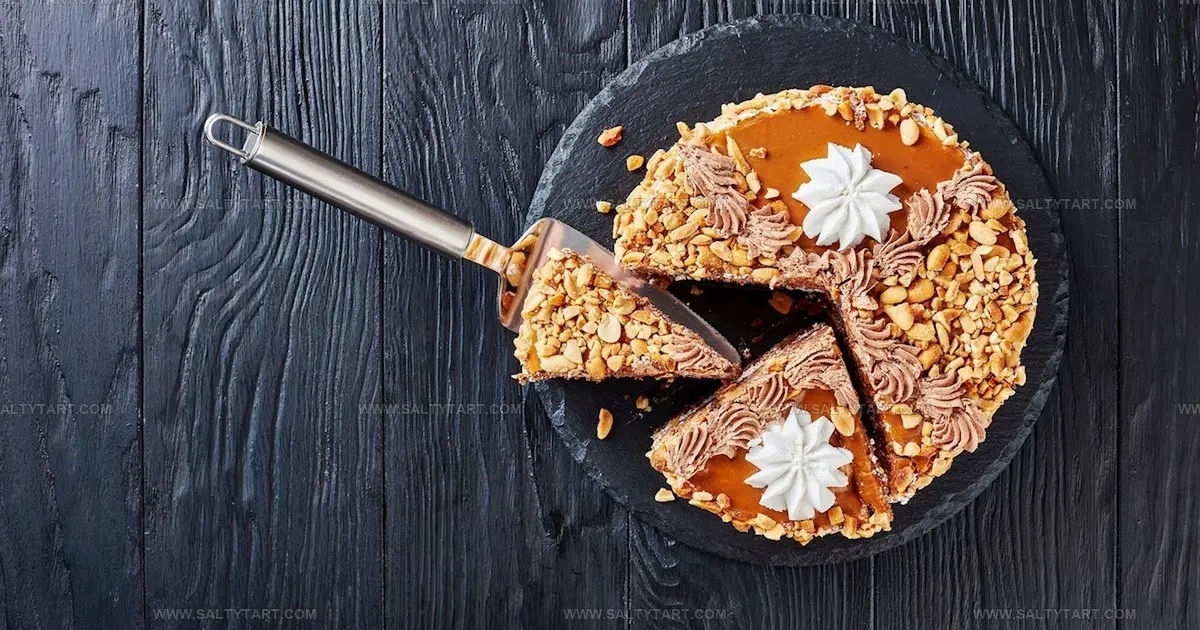
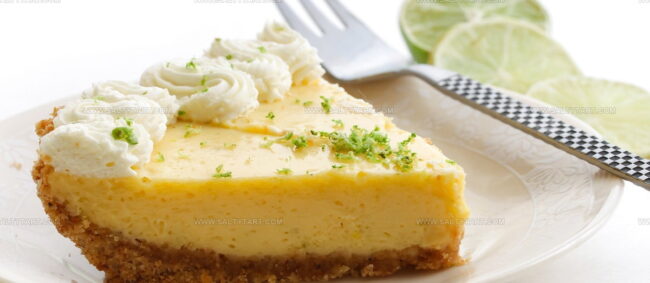

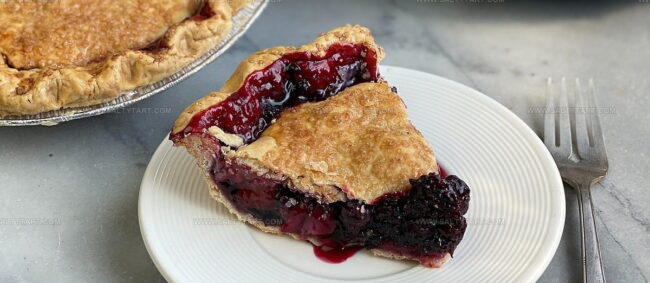

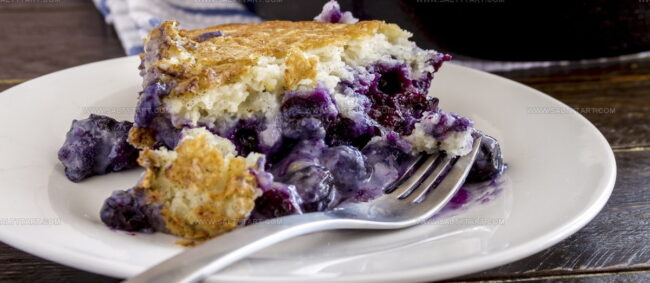
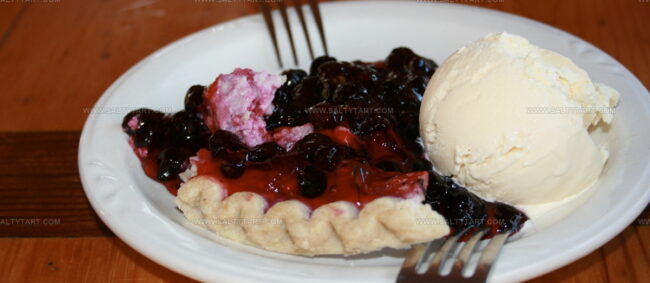
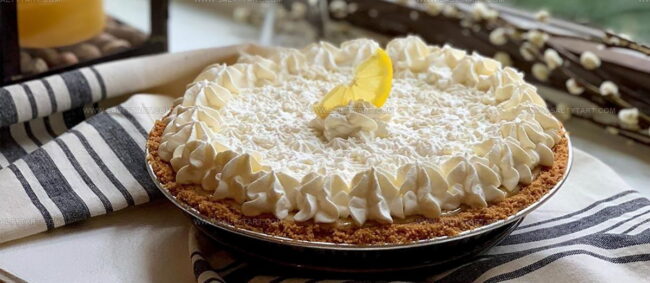

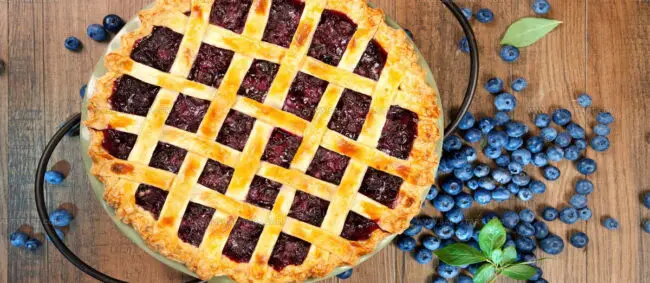
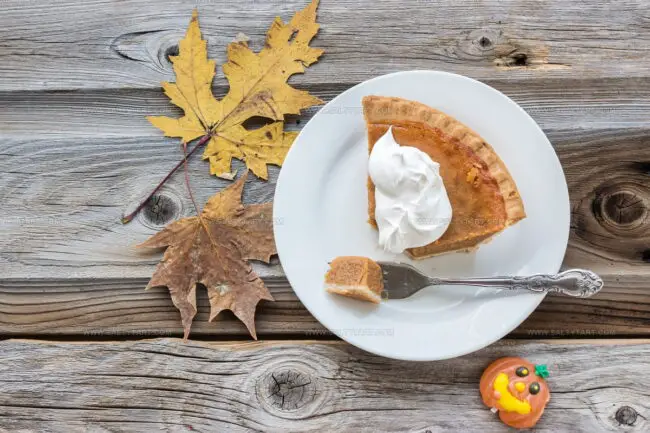
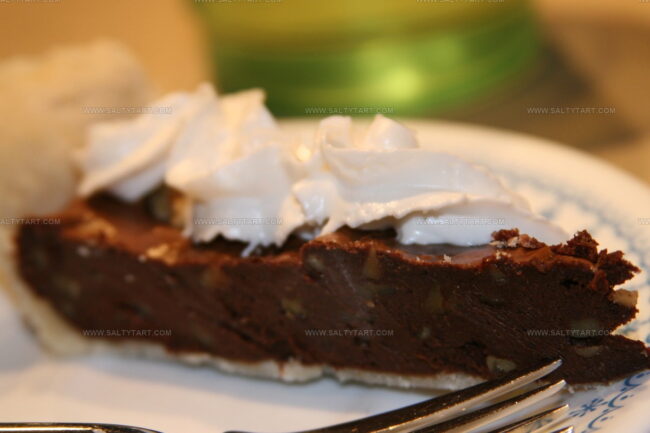


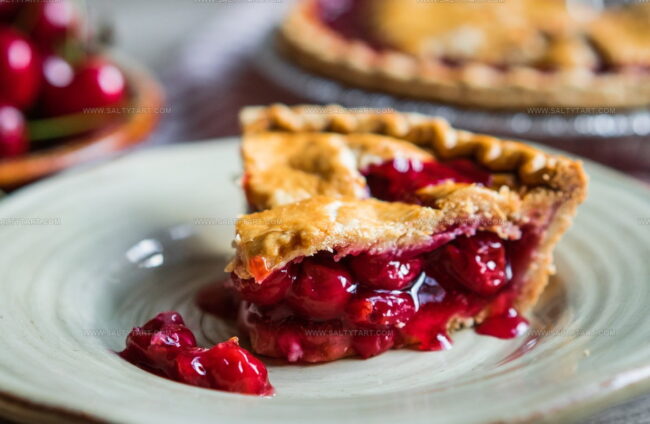
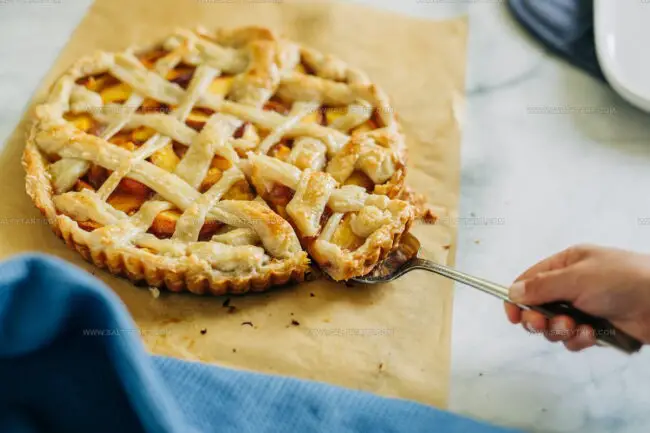
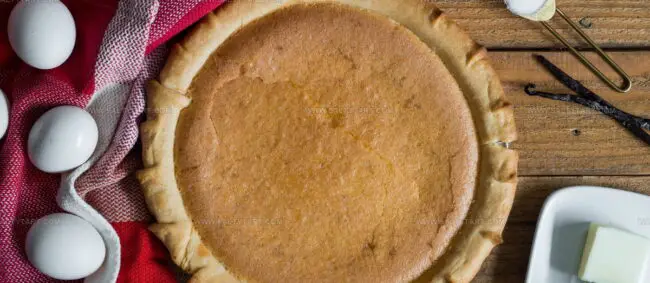
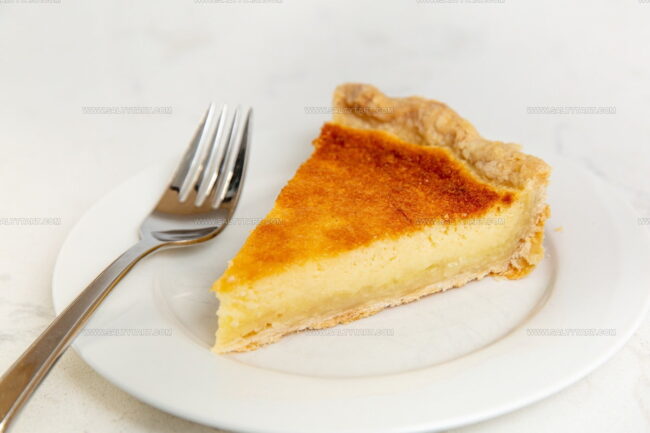
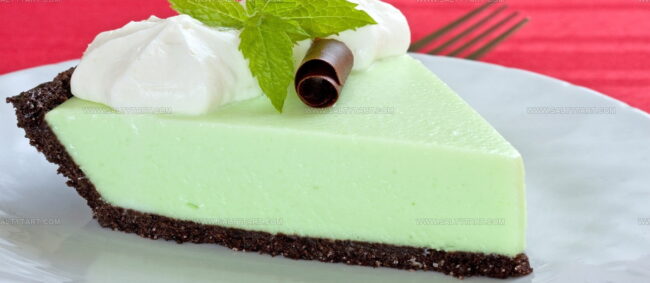
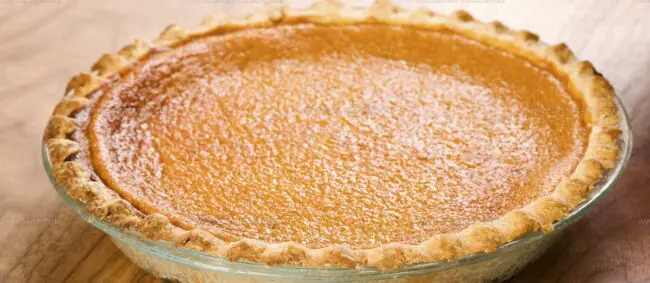
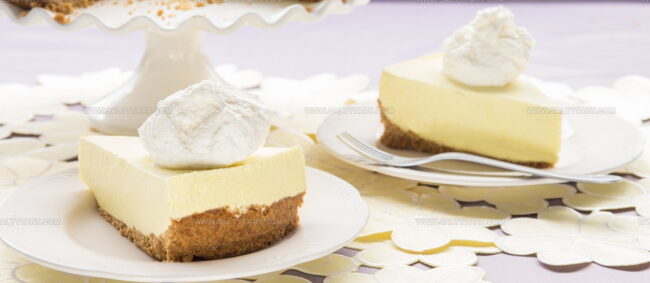
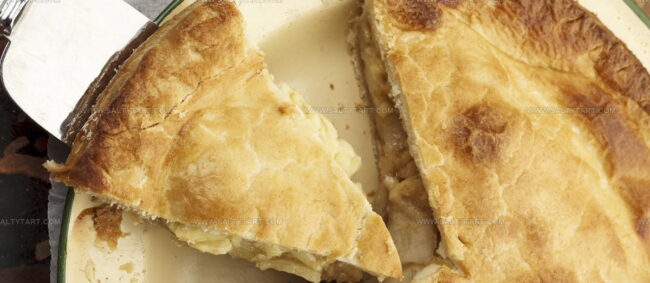
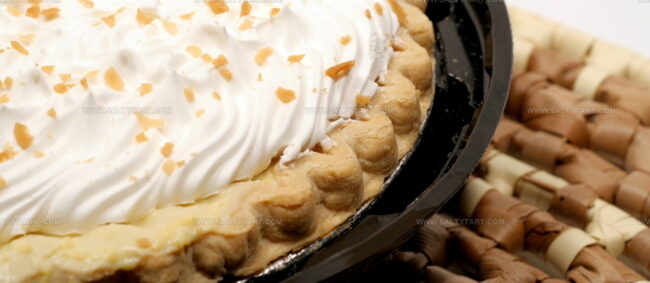
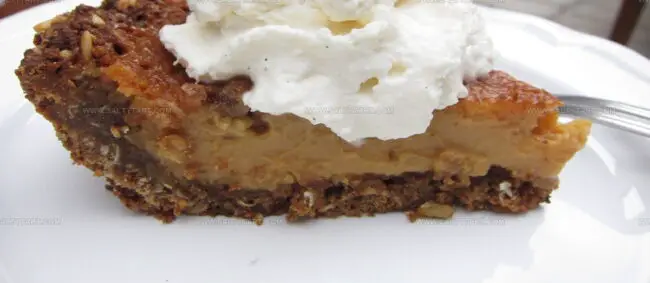
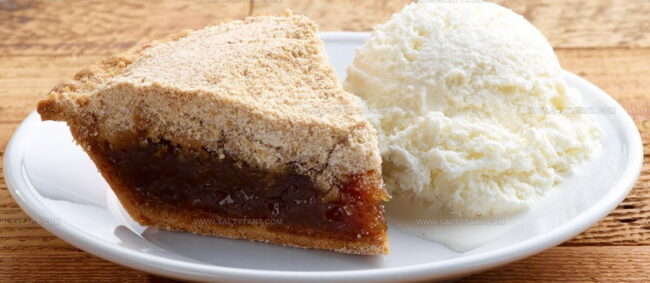
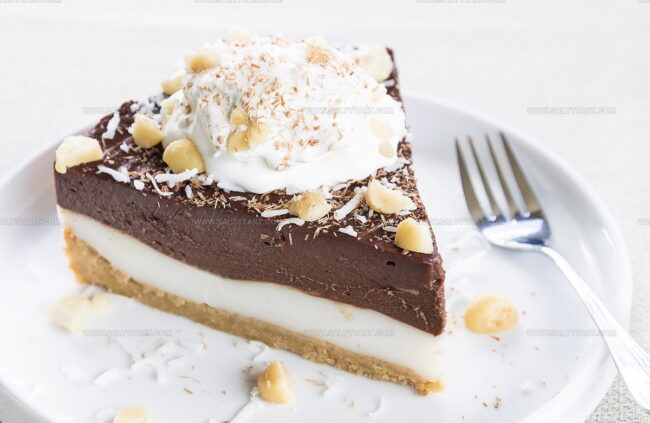
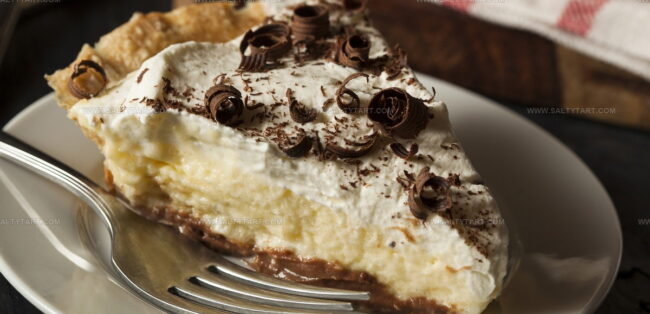
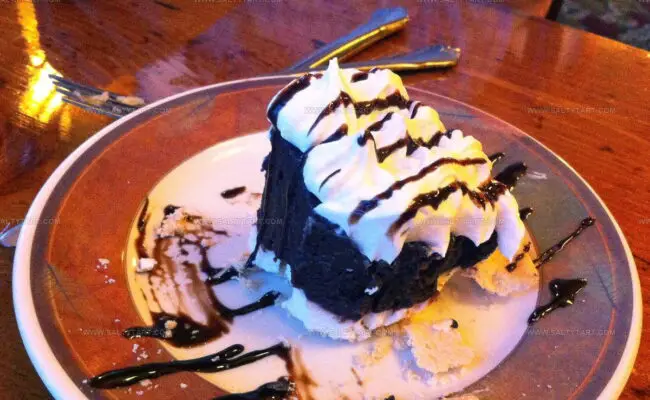
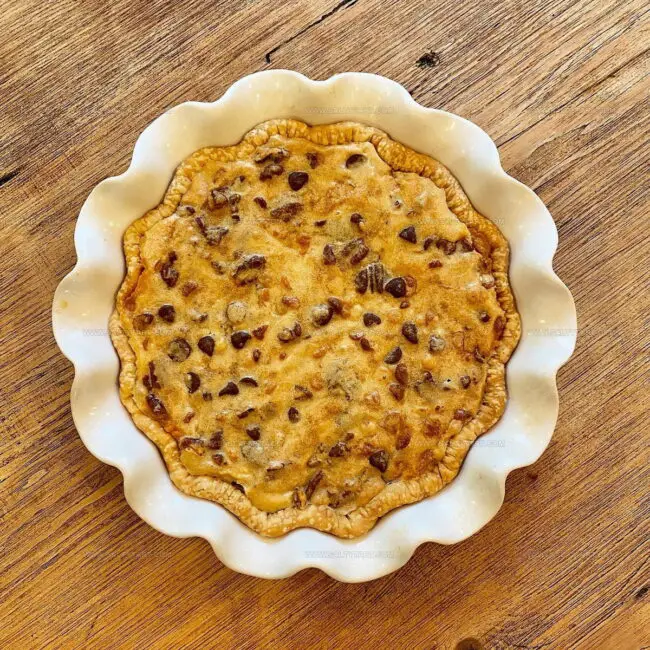
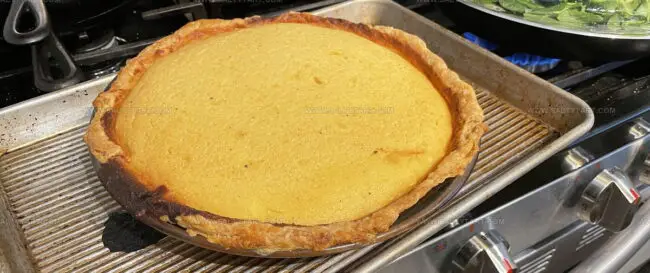
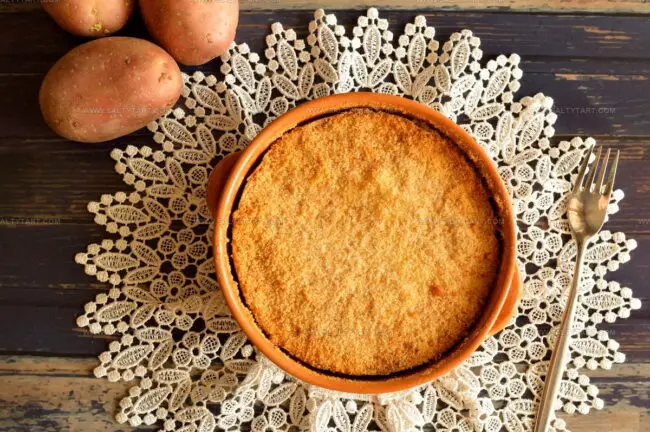


Jess Martinez
Contributing Recipe Writer & Nutrition Consultant
Expertise
Southwestern and Latin American cooking, Nutritional analysis and healthy recipe planning, Cultural food traditions, Modifying traditional dishes for better health
Education
Santa Fe Community College
Certificate in Culinary Arts
Focused on mastering the flavors and cooking methods of traditional Southwestern cuisine.
Jess’s love for bold, homegrown flavors led her straight into the world of Southwestern cooking and cultural nutrition.
After completing her Certificate in Culinary Arts at Santa Fe Community College, she made it her mission to show that good-for-you food can still taste incredible.
At saltytart.com, Jess shares vibrant, health-conscious recipes with roots in tradition but a fresh, modern twist. When she’s not testing new recipes, you’ll find her at local growers’ markets, tending her herb garden, or digging into food history books.